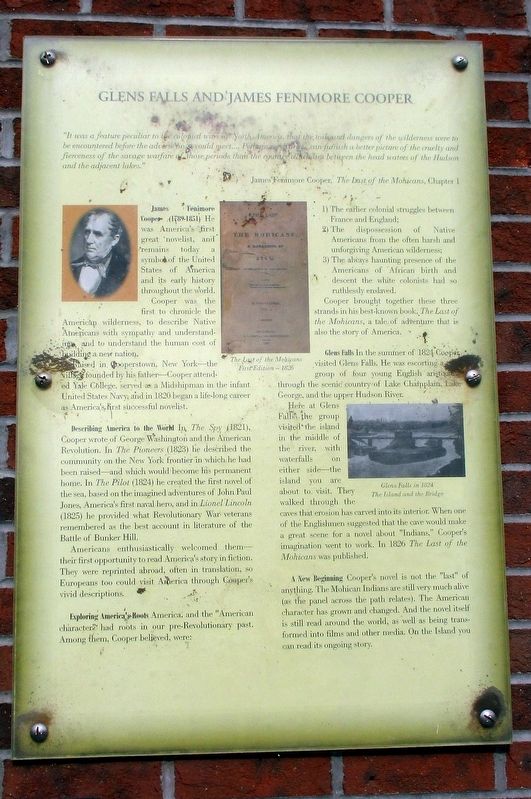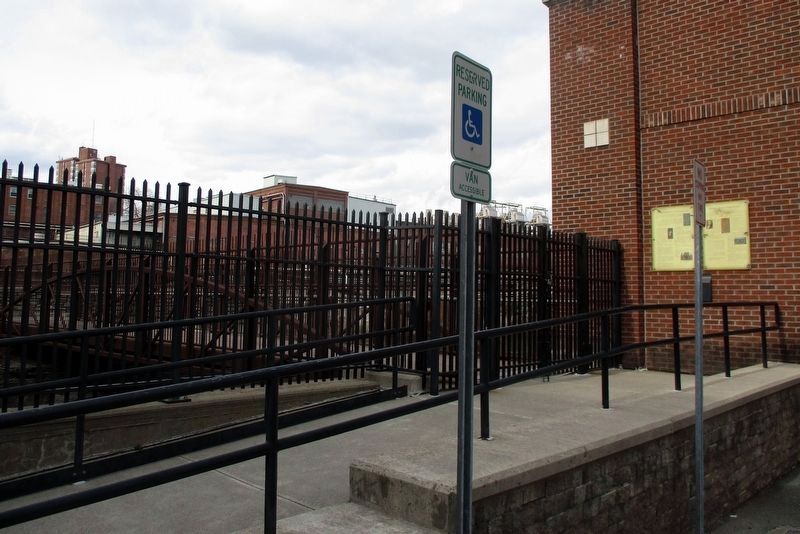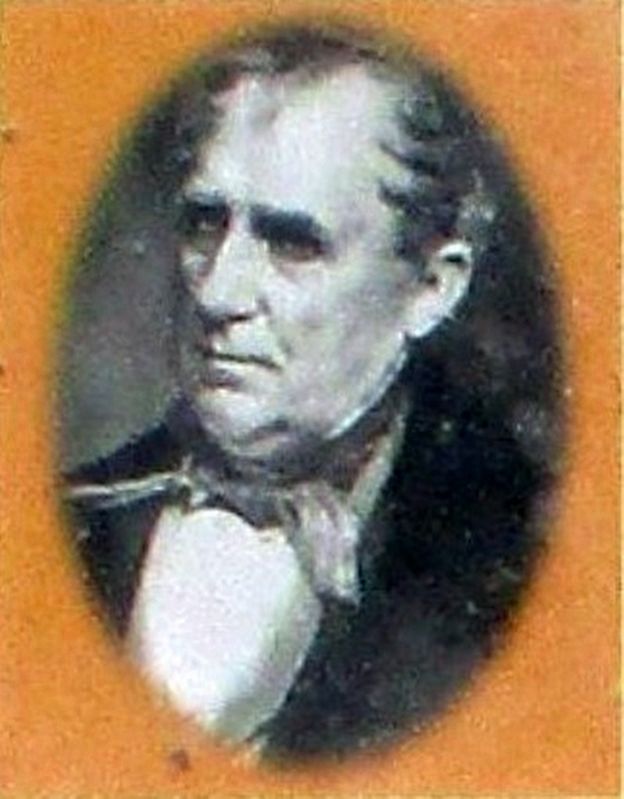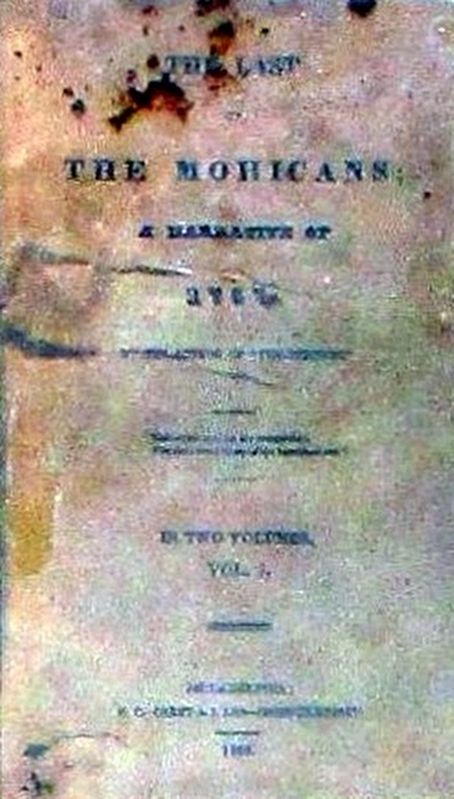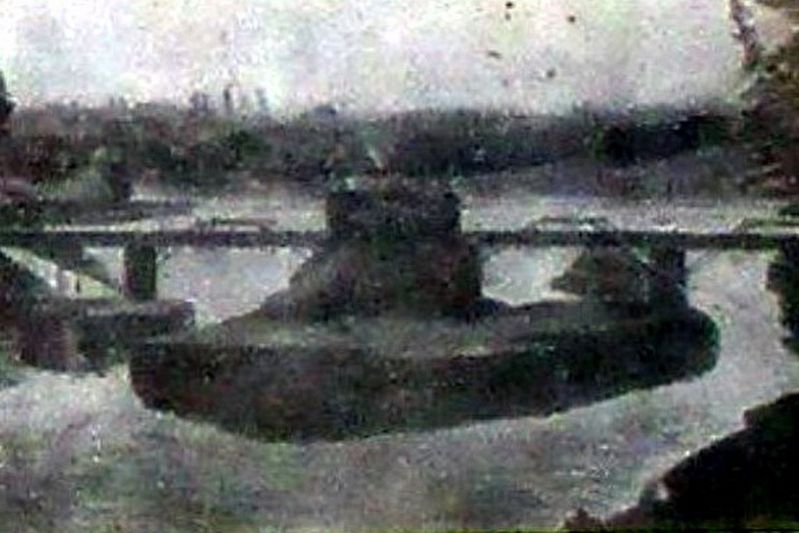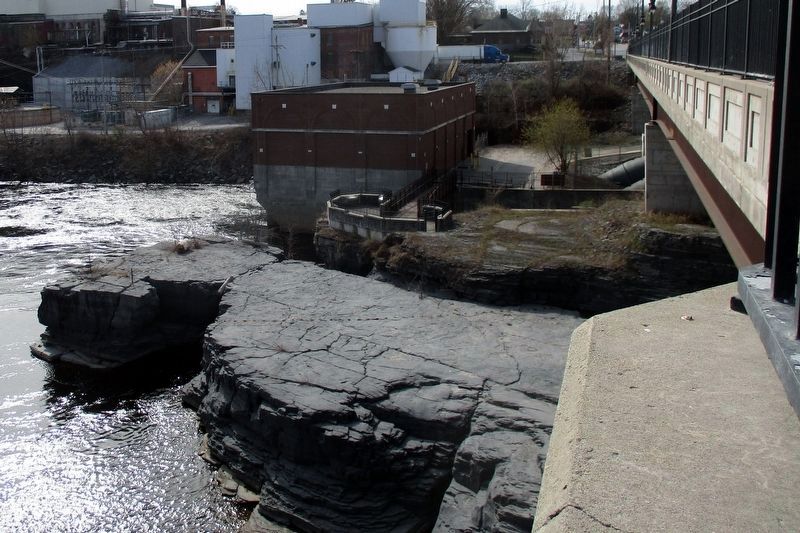South Glens Falls in Saratoga County, New York — The American Northeast (Mid-Atlantic)
Glens Falls and James Fenimore Cooper
”It was a feature peculiar to the colonial wars of North America, that the toils and dangers of the wilderness were to be encountered before the adverse hosts could meet…. Perhaps (illegible) can furnish a better picture of the cruelty and fierceness of the savage warfare of those periods than the country which lies between the head waters of the Hudson and the adjacent lakes.” James Fenimore Cooper, The Last of the Mohicans, Chapter 1
James Fenimore Cooper (1789-1851) He was America’s first great novelist, and remains today a symbol of the United States of America and its early history throughout the world.
Cooper was the first to chronicle the American wilderness, to describe Native Americans with sympathy and understanding, and to understand the human cost of building a new nation>br> Raised in Cooperstown, New York – the village founded by his father – Cooper attended Yale College, served as a Midshipman in the infant United States Navy, and in 1820 began a life-long career as America’s first successful; novelist.
Describing America to the World In The Spy (1821), Cooper wrote of George Washington and the American Revolution. In The Pioneers (1823) he described the community on the New York frontier in which he had been raised – and which would become his permanent home. In The Pilot (1824) he created the first novel pf the sea, based on the imagined adventures of John Paul Jones, America’s first naval hero, and in Lionel Lincoln (1825) he provided what Revolutionary War veterans remembered as the best account in literature of the Battle of Bunker Hill.
American’s enthusiastically welcomed them – their first opportunity to read America’s story in fiction. They were reprinted abroad, often in translation, so Europeans too could visit America through Cooper’s vivid descriptions.
Exploring America’s Roots America, and the “American character" had roots in our pre-Revolutionary past. Among them, Cooper believed, were:
1) The earlier colonial struggles between France and England;
2) The Dispossession of Native Americans from the often harsh and unforgiving American wilderness;
3) The always haunting presence of the Americans of African birth and descent of the white colonials had so ruthlessly enslaved.
Cooper brought together these three strands in The Last of the Mohicans, a tale of adventure that is also the story of America.
Glens Falls In the summer of 1824, Cooper visited Glens Falls. He was escorting a t(ravelling) group of four young English aristocrats through the scenic country of Lake Champlain, Lake George, and
the upper Hudson River.
Here at Glens Falls the group visited the island in the middle of the river, with waterfalls on either side – the island you are about to visit. They walked through the caves that erosion has carved into its interior. When one of the Englishmen suggested that the cave would make a great scene for a novel about “Indians,” Cooper’s imagination went to work. In 1826 The Last of the Mohicans was published.
A New Beginning Cooper’s novel is not the “last” of anything. The Mohican Indians are still very much alive (as the panel across the path relates). The American character has grown and changed. And the novel itself is still read around the world, as well as being transformed into films and other media. On the Island you can read its ongoing story.
Topics. This historical marker is listed in these topic lists: Arts, Letters, Music • Colonial Era • Native Americans. A significant historical year for this entry is 1820.
Location. 43° 18.337′ N, 73° 38.432′ W. Marker is in South Glens Falls, New York, in Saratoga County. Marker can be reached from Cooper's Cave Drive north of River Street. The marker is at the end of the Cooper's Cave Drive pedestrian spur that runs under the Cooper's Cave Bridge. Touch for map. Marker is in this post office area: South Glens Falls NY 12803, United States of America. Touch for directions.
Other nearby markers. At least 8 other markers are within walking distance of this marker. The Mohican Nation – Yesterday and Today (here, next to this marker); The South Glens Falls Hydroelectric Project (a few steps from this marker); Cooper’s Cave (within shouting distance of this marker); Glens Falls/Chepontuc (about 500 feet away, measured in a direct line); The onetime Dr. James Ferguson Office (approx. 0.4 miles away); Weber Furlong (approx. 0.4 miles away); 18th Separate Company Armory (approx. 0.4 miles away); Glens Falls War Memorial (approx. 0.4 miles away). Touch for a list and map of all markers in South Glens Falls.
Credits. This page was last revised on April 26, 2020. It was originally submitted on April 21, 2020, by Larry Gertner of New York, New York. This page has been viewed 231 times since then and 33 times this year. Photos: 1, 2, 3, 4, 5, 6. submitted on April 21, 2020, by Larry Gertner of New York, New York. • Michael Herrick was the editor who published this page.
